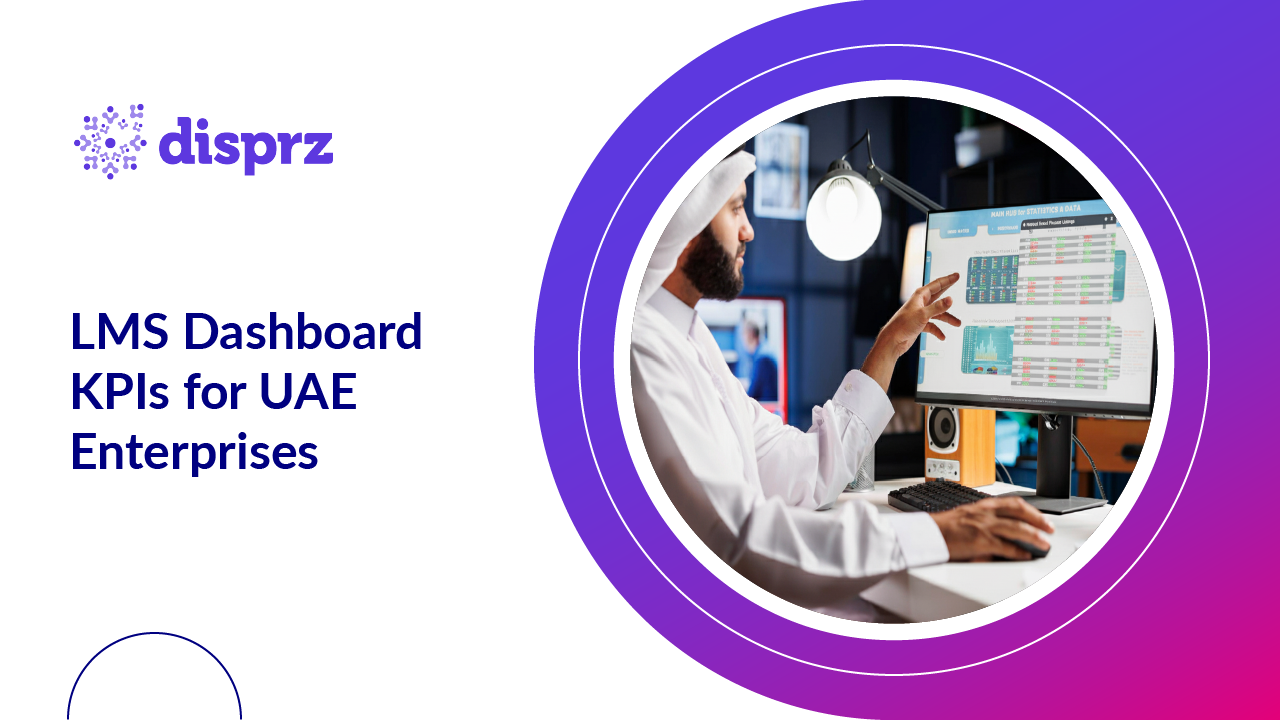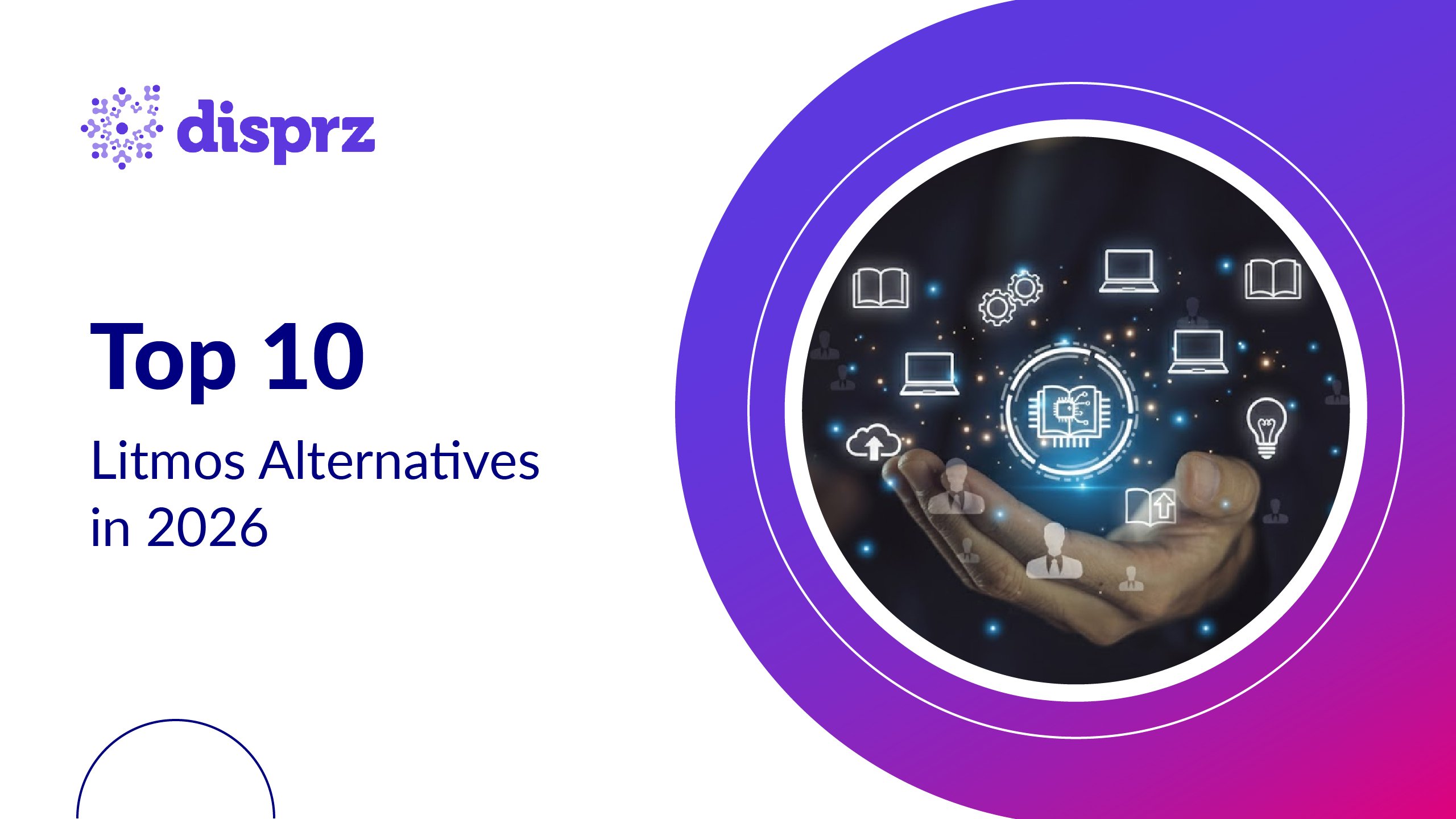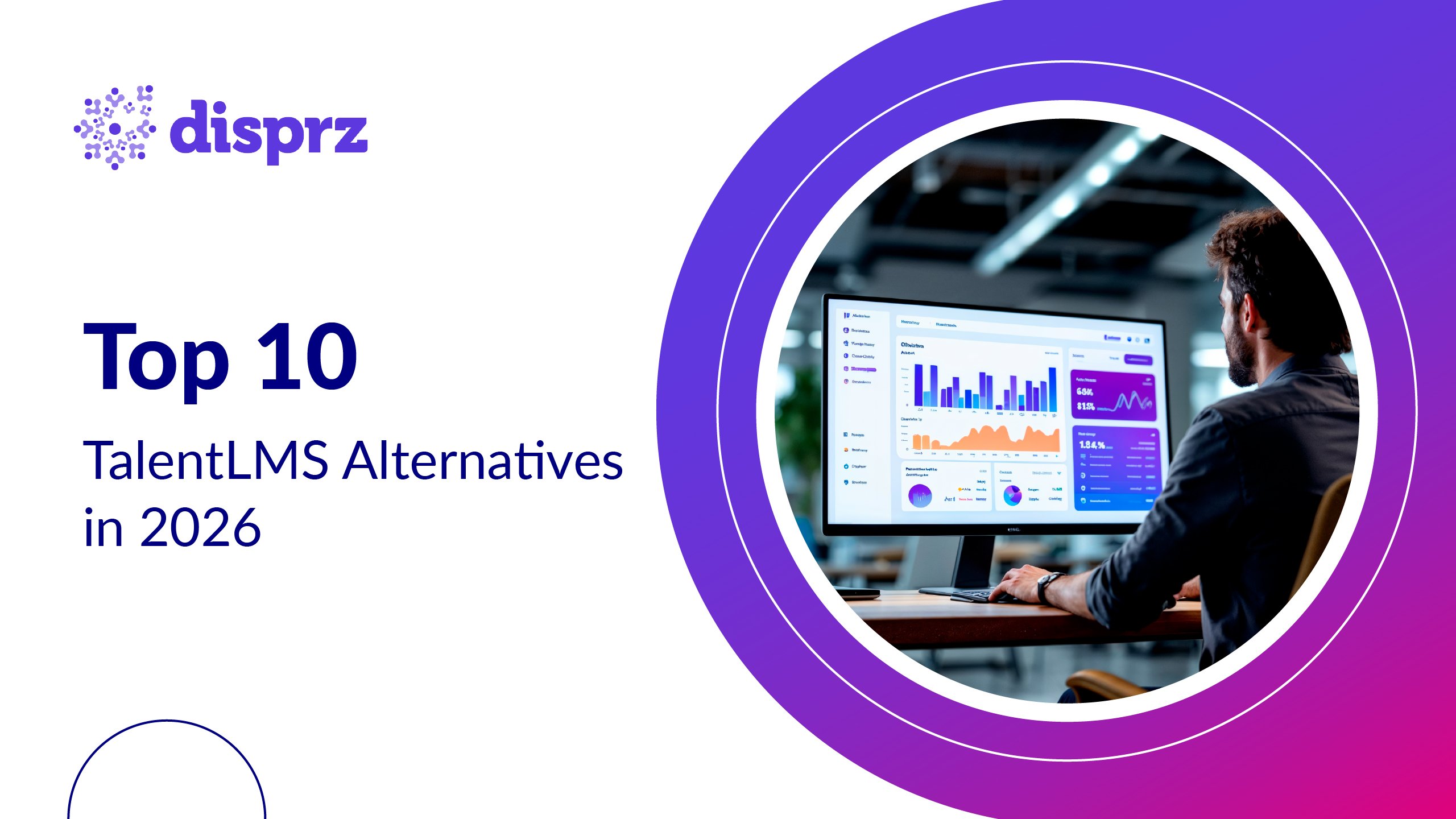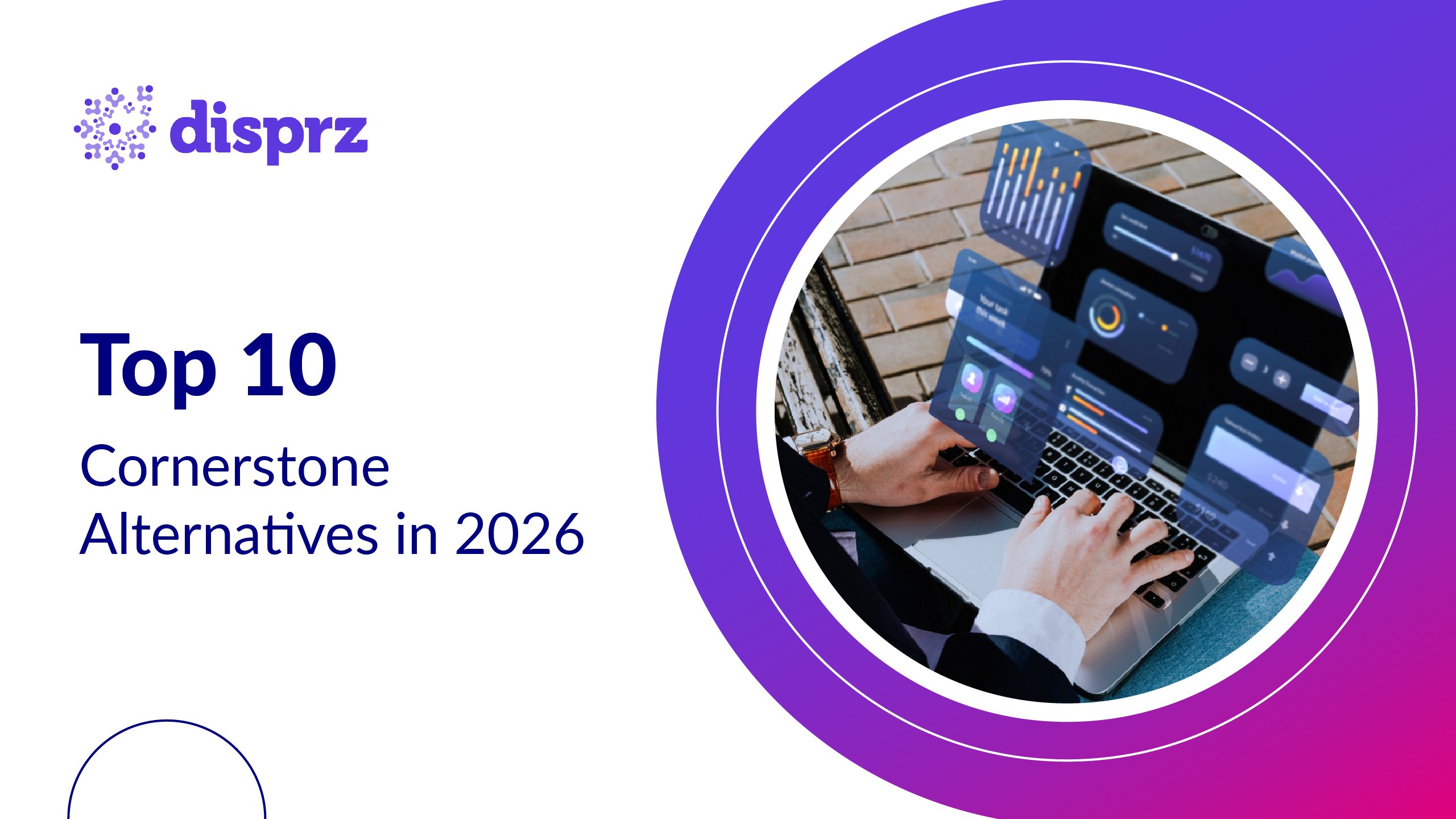The fast-changing business environment in the UAE brings a dual challenge: preparing people for the future while staying firmly compliant with local regulations.
With Vision 2031 charting a path toward a knowledge-based economy and Emiratization goals redefining hiring and capability priorities, learning and development can no longer be treated as a back-office support function. It has become a strategic lever; one that directly shapes workforce readiness, business resilience, and long-term growth.
But how can HR, compliance officers, and business leaders ensure that training initiatives are not just rolled out, but also deliver measurable outcomes? The answer lies in an effective LMS dashboard in UAE enterprises; a centralized hub that tracks, measures, and visualizes training impact in real time.
From audit readiness in highly regulated industries such as banking, healthcare, and aviation, to monitoring training ROI in UAE organizations across retail and logistics, dashboards provide the insights needed for smarter decision-making. With the right LMS KPIs in the UAE enterprises can reduce compliance risks, optimize costs, and prove the business value of training investments.
This guide explores the 10 essential learning management system dashboard KPIs for UAE enterprises, alongside practical strategies to link compliance and ROI for sustainable impact.
What Makes an Effective LMS Dashboard?
An LMS dashboard for UAE enterprises is not just a reporting tool; it’s a powerful decision-making engine. The most effective dashboards excel in two key areas: real-time tracking and role-based customization.
First, real-time tracking ensures that training progress, compliance deadlines, and learner engagement are always visible. For example, a construction company in Dubai can instantly confirm whether site supervisors have completed mandatory safety certifications before stepping onto a project site, significantly reducing regulatory risks.
Equally important is role-based customization. Different stakeholders require different levels of visibility and insights. HR teams typically need an overview of enrollment, completion rates, and adoption across the workforce. Compliance officers, on the other hand, prioritize audit-ready certification reports and automated renewal reminders. Managers look for metrics that highlight skill proficiency levels, assessment performance, and the direct impact of training on productivity.
By presenting tailored data views for each group, the LMS dashboard ensures that every stakeholder receives actionable, role-specific insights, enabling smarter and faster decisions across the organization.
Explore how the Disprz LMS dashboard provides real-time tracking and customized insights for HR, compliance, and business leaders.
10 Essential LMS Dashboard KPIs for UAE Enterprises
Tracking the right metrics is what separates successful learning strategies from those that simply check the box. For enterprises in the UAE, where compliance demands are strict and business agility is a top priority, LMS KPIs in UAE provide the evidence leaders need to prove training value. A well-designed LMS dashboard for UAE organizations turns raw data into actionable insights; helping HR, compliance, and business heads see what’s working and where gaps remain.
Below are 10 essential KPIs every UAE enterprise should monitor to strengthen compliance, boost engagement, and maximize training ROI in UAE.

1) Learner Enrollment & Participation Rate
This KPI shows how many employees have signed up for assigned programs and how many actively participate. In UAE enterprises with diverse workforces (including Emirati nationals and expats), tracking participation helps ensure inclusivity and progress toward Emiratization targets. A low participation rate may signal issues such as poor communication, lack of relevance, or insufficient manager support.
Dashboards allow HR to identify specific teams or departments where participation lags, enabling targeted interventions. For example, if engineers in Abu Dhabi enroll but rarely engage, leaders can redesign the program for contextual relevance or add mobile-first options for easier access.
2) Course Completion Rate
A high enrollment rate is meaningless if employees don’t complete courses. Course completion rates provide insight into whether training is structured effectively and aligned with learner needs. For example, banks in Abu Dhabi must ensure 100% completion of anti-money laundering modules to meet Central Bank compliance. Dashboards also show whether completions differ by branch, department, or nationality groups, allowing HR leaders to spot cultural or operational barriers.
A consistently low completion rate might highlight issues such as lengthy modules, lack of interactivity, or limited accessibility during work hours. By tracking this KPI closely, UAE enterprises ensure learning translates into measurable compliance and capability gains.
3) Average Time to Completion
Measuring how long employees take to finish a course helps spot bottlenecks. If frontline retail staff in Dubai malls take too long to complete onboarding training, it signals a need for shorter, mobile-friendly modules that align with high-paced work environments. Conversely, if employees complete courses far too quickly, it may indicate they are skimming rather than genuinely engaging with the content.
Dashboards help enterprises balance efficiency with depth of learning, ensuring that training is practical but also rigorous. For sectors such as aviation or healthcare, where knowledge accuracy is critical, tracking completion time helps maintain high standards without overburdening employees.
4) Assessment Scores & Pass Rates
This KPI evaluates knowledge retention and learning effectiveness. For healthcare enterprises in the UAE, assessment pass rates for patient safety protocols are not just academic; they directly impact patient outcomes and regulatory adherence. Consistently low scores may indicate content gaps, poor instructional design, or a mismatch between training and day-to-day job realities.
High pass rates, on the other hand, give leaders confidence that employees are job-ready. Dashboards can also segment results by department or region, helping HR pinpoint where additional coaching or refresher training is needed. For compliance-heavy industries, these key performance indicators ensure that certifications reflect actual competence, not just attendance.
5) Compliance Certification Status
Perhaps the most mission-critical KPI for UAE organizations, compliance status ensures certifications are valid, renewed, and documented. With an LMS dashboard for UAE enterprises, compliance managers can set automatic renewal reminders, generate audit-ready reports in a few clicks, and create compliance heatmaps to identify high-risk zones.
In industries such as oil & gas or banking, even one expired certification could lead to penalties or reputational damage. A proactive dashboard ensures that no employee falls behind on legally mandated training. It also allows enterprises to demonstrate full audit readiness during surprise inspections, protecting both operational continuity and organizational credibility.
The Disprz LMS automates certification tracking and generates audit-ready reports in just a few clicks — ensuring zero compliance gaps.
6) Learner Engagement (Active Users, Logins, Interactions)
Beyond completions, enterprises must track learner engagement: daily active users, login frequency, and interactions such as discussion forums or simulations. Engagement is a leading indicator of long-term learning adoption. In the UAE, where workforces are highly diverse and often geographically dispersed, understanding engagement trends helps enterprises design inclusive, mobile-first programs.
If employees log in regularly but rarely participate in discussions, it signals the need for more collaborative or gamified experiences. Higher engagement generally correlates with stronger knowledge retention and improved performance. By monitoring this KPI, UAE employers can tailor experiences to different learning cultures and ensure consistent momentum across teams.
7) Training ROI Metrics (Cost per Learner, Cost Savings)
Executives want proof of value. By measuring cost per learner, time saved, and productivity gained, organizations can calculate training ROI in UAE. For example, replacing classroom sessions with digital modules can reduce costs by up to 40% while increasing access for remote teams in Sharjah or Fujairah. Dashboards provide transparency, showing whether investments are reducing onboarding time, cutting compliance penalties, or improving sales performance.
This KPI also allows HR to compare training expenses against measurable business results, making the case for budget expansion. For UAE enterprises, where digital transformation and efficiency are top priorities, ROI tracking builds executive trust in L&D.
8) Employee Skill Proficiency Levels
Tracking skills is critical for UAE enterprises adopting future skills frameworks aligned with Vision 2031. LMS dashboards can highlight gaps between current proficiency and role requirements, helping HR teams align learning paths with workforce planning. For example, a logistics company may discover that frontline staff are strong in operational skills but weak in digital literacy, requiring immediate upskilling to align with automation initiatives.
Dashboards can also show improvements over time, proving the impact of training programs on employee growth. This KPI is especially valuable for Emiratization efforts, where measuring the skill development of national employees is vital for career progression.
9) Feedback & Satisfaction Ratings
Surveys and feedback scores reflect how employees perceive training. High satisfaction signals relevance and usability, while low ratings identify areas for improvement. UAE employers can also align training satisfaction scores with employee experience initiatives, improving retention and engagement. For instance, if learners consistently highlight outdated content or lack of interactivity, leaders can act quickly to improve.
Dashboards make this feedback visible at scale, showing trends across departments or demographics. Over time, positive ratings become an indicator of a strong learning culture; while negative ones serve as early warnings to refine design, delivery, or facilitator effectiveness before they impact outcomes.
10) Business Impact Metrics (Productivity, Compliance Risk Reduction)
The ultimate test of training lies in business impact. Are sales increasing after product training? Are compliance risks decreasing after mandatory modules? Tracking these outcomes connects learning investments directly to strategic business KPIs in UAE enterprises. For example, aviation companies can measure whether safety training reduces incident reports, while retail businesses can assess if customer service training improves satisfaction scores.
Dashboards also make it easier to present L&D results to leadership in a language they understand, such as business growth, cost savings, and risk reduction. This KPI closes the loop between learning and business performance, demonstrating tangible ROI for UAE organizations.
How Dashboards Help UAE Employers Ensure Compliance
Compliance is one of the most critical priorities for enterprises in the UAE, especially in industries such as banking, healthcare, construction, and aviation where regulations are both strict and frequently updated. Falling short on training requirements can result in hefty fines, reputational damage, or even project shutdowns.
An effective LMS dashboard in UAE enterprises simplifies compliance by providing real-time visibility into certifications, deadlines, and completion status across the workforce. Instead of scrambling during audits, organizations can proactively manage risks and demonstrate accountability, ensuring that their teams stay prepared and fully aligned with legal and regulatory expectations.
Labor Law Training Requirements
Under the UAE labor laws, organizations must provide employees with training on health, safety, and workplace ethics. An LMS dashboard for UAE employers ensures mandatory modules are assigned, tracked, and completed, helping avoid penalties and disputes.
Audit-Readiness for Regulated Industries
Banks, healthcare providers, and aviation firms in the UAE undergo frequent audits. Dashboards provide instant access to audit-ready compliance reports, eliminating manual data collection and ensuring zero gaps during inspections.
Using KPIs to Measure Training ROI in UAE Enterprises
The real value of KPIs emerges when organizations connect training data with financial and operational outcomes. For instance, a telecom company in Dubai can directly link sales training completions to revenue growth by tracking whether certified agents close more deals. In the same way, logistics firms can measure if safety training translates into fewer on-site accidents, creating a clear line of sight between learning and business performance.
Beyond performance outcomes, cost-benefit analysis is equally important. By calculating savings from reduced travel, classroom hours, and compliance penalties, enterprises can present tangible evidence of training ROI in UAE. An LMS dashboard makes these calculations transparent, defensible, and easy to communicate to leadership, ensuring that L&D investments are seen as value-adding rather than cost-heavy.
Conclusion
In the UAE’s fast-changing regulatory and economic environment, enterprises cannot afford to run L&D programs blindly. The right LMS dashboard in UAE empowers HR, compliance, and business leaders with real-time data on LMS KPIs in UAE, ensuring both compliance and measurable ROI. By turning training metrics into actionable insights, organizations can align learning with national priorities such as Emiratization, strengthen audit readiness, and optimize costs. Most importantly, dashboards create a culture of accountability where learning is directly tied to business outcomes, helping UAE enterprises stay competitive in a dynamic global market.
To recap, the 10 essential LMS dashboard KPIs for UAE enterprises are:
-
Learner enrollment & participation rate
-
Course completion rate
-
Average time to completion
-
Assessment scores & pass rates
-
Compliance certification status
-
Learner engagement metrics
-
Training ROI metrics
-
Employee skill proficiency levels
-
Feedback & satisfaction ratings
-
Business impact metrics
By integrating these KPIs, UAE enterprises can ensure audit readiness, enhance learner engagement, and maximize training ROI for UAE organizations.
Ready to see the impact firsthand? Get a live demo of the Disprz LMS dashboard and start tracking ROI & compliance KPIs today.
FAQs
1) What are LMS dashboard KPIs?
LMS dashboard KPIs are measurable indicators that track the effectiveness of training programs, compliance readiness, and learner engagement. For UAE enterprises, these KPIs provide real-time visibility into areas such as enrollment, course completion, certification status, and training ROI. By consolidating these insights, dashboards help HR, compliance teams, and managers make data-driven decisions that align with business and regulatory priorities.
2) Which KPIs are most important for compliance in UAE enterprises?
For compliance in the UAE, the most critical KPIs include course completion rates, compliance certification status, assessment pass rates, and audit-readiness metrics. These ensure that employees stay up to date with mandatory training under UAE labor laws and sector-specific regulations. Monitoring these KPIs reduces compliance risks, prevents fines, and guarantees enterprises can demonstrate accountability during audits.
3) How do LMS KPIs help measure training ROI?
LMS KPIs link learning outcomes directly to business impact by tracking metrics such as cost per learner, time saved, productivity gains, and reduced compliance penalties. In UAE enterprises, this helps demonstrate how training investments deliver measurable value, whether by improving performance, accelerating onboarding, or lowering operational risks. Dashboards make ROI calculations transparent and defensible for business leaders.








